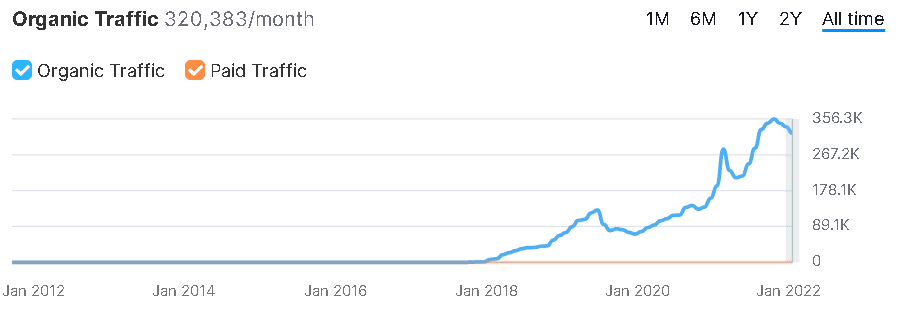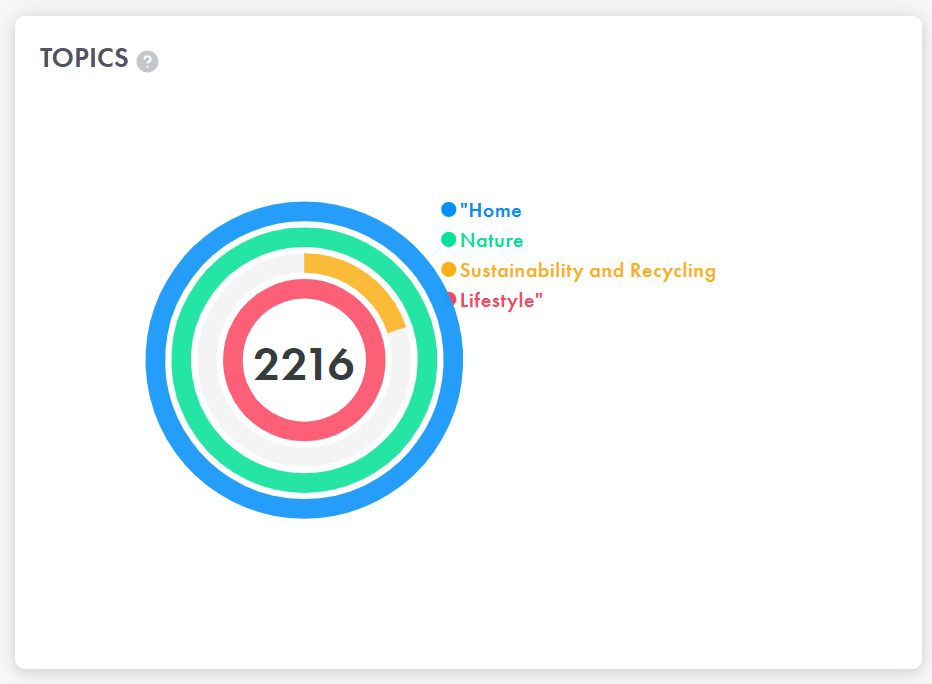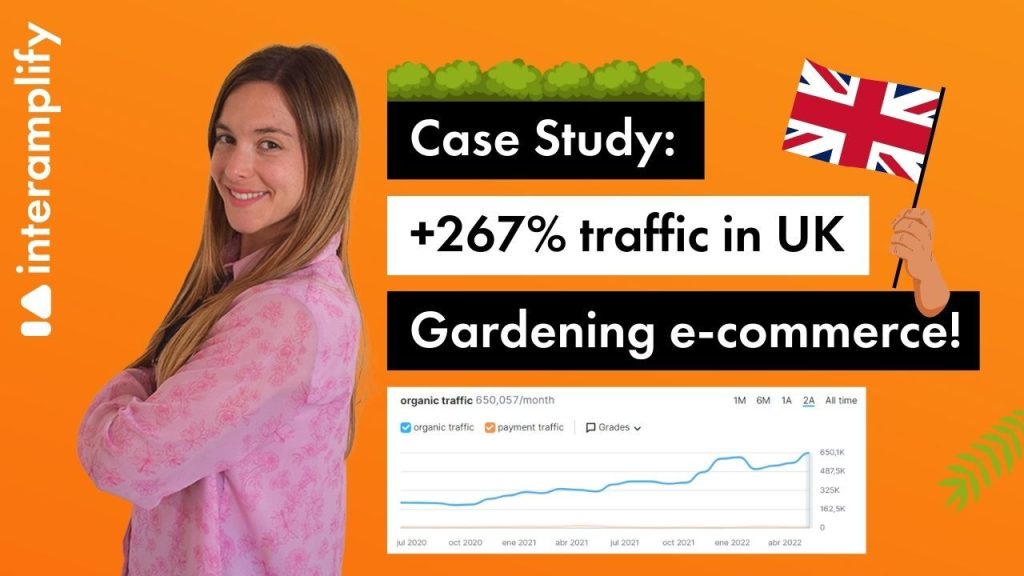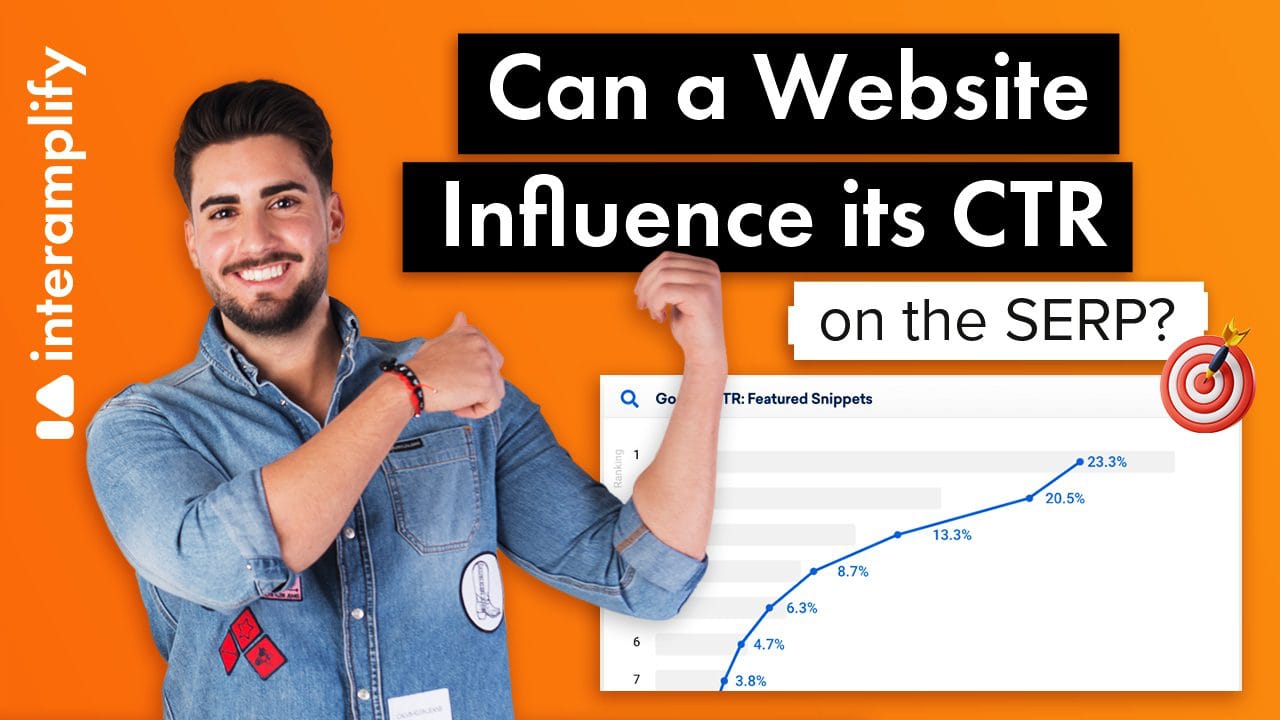One of the most frustrating aspects of SEO is seeing how organic traffic fails to take off or stagnates at some point in a project’s trajectory. If, despite your efforts, you have experienced this sensation, do not be concerned; it is a common problem with a solution.
This time, we’ll show you how we increased organic visits by +267 % for a gardening and home e-commerce site in the United Kingdom.
To begin with…
Let us introduce you to our client before we begin the analysis:
- Their website sells gardening and home products via e-commerce.
- We were dealing with a multilingual domain with international activity and presence in different countries such as Ireland, Scotland, France or Belgium. However, it was in the United Kingdom where it did not achieve the expected results.
Furthermore, it has physical points of sale spread throughout the British territory.
According to Statista, gardening is one of the most popular pastimes in the UK, especially during and after the coronavirus (COVID-19) pandemic, when most people had to stay indoors and social activities were limited.
As a result, despite his reservations, our client could not miss out on the opportunity to do business in this country. Now we will explain our strategy in detail so that you can see how we were able to successfully reverse this situation.
Let’s get to work!
Therefore, the goal was clear: we needed to see an increase in organic traffic to the website and for its presence in the SERPs to become more relevant.
And we were successful: the site began to receive more visitors, with a 267% increase. In terms of numbers, this means we went from 133,600 to 356,300 visits.

This is how we increased organic traffic by 267%
Our first step was to conduct an SEO audit of the website in order to identify the root cause of the problem in our case study.
No two clients are alike, and no two SEO strategies are similar. As a result, the first thing we always recommend is getting to know the website in depth. Do not start an SEO strategy if you lack information or data to make informed decisions.
We examined the needs and shortcomings it presents, as well as the client’s concerns and objectives, in addition to the industry in which it competes.
In our case, the SEO audit informed us of the main factors impeding the site’s growth as well as the resources we planned to devote to implementing actions:
- It had numerous 404 pages.
- There was no consideration given to meta descriptions or TITLEs.
- It only provided content on the catalog’s product pages.
- They were not allocating resources to a backlinks strategy.
- In addition, they were not taking advantage of all possible keywords.
First step, apply On Page SEO techniques
We conducted an On Page audit, which produced some concerning results. The meta descriptions and TITLEs had been translated using an automatic translator and had not been adapted to the peculiarities of each country’s language.
Our native translators modify the content of these elements, translating them from a local point of view and according to the language differences of each territory, in order for Google to understand that it is an international site and show each page translated according to the place from which the user is searching.
Second step, fix 404 errors!
It may appear obvious, but when we performed the technical audit, we were taken aback. The site had too many 404 errors, which were confusing Google. As you can imagine, fixing all of these pages was critical to the site’s health. We kept the ones with interesting content and backlinks and removed the ones with empty 404 pages.
A high number of 404 pages indicates customer abandonment, which results in an increased bounce rate and a lower conversion rate.
To detect this type of HTTPS protocol errors, we use Google Analytics as follows:
- Access the “Behavior” menu and select “all pages”.
- Set “Page Title” to primary dimension.
- Finally, type in the search engine “404”.
The tool will then display a list similar to the one below, containing all of the error pages that must be corrected.

Third step, scan all keywords
This step may also appear obvious to you. However, we have encountered websites on more than one occasion that only take advantage of their main keywords once and then forget about it until it causes a problem.
Our client was experiencing the same thing. Can you guess what happened when we ran a Data Studio on the keywords for which each URL ranks?
Specifically, it was not capitalizing on the traffic opportunity provided by other specific keywords. This meant that a huge opportunity for attracting visitors and customers was being wasted.
As a result, we focused our efforts on long tails and related keywords that add semantic value and reinforce the main keywords. The results were incredible; we were able to rank twice as many organic keywords. You can see for yourself in the image below.

Fourth step, optimize content
The analysis of the keywords that were being used led us in the right direction. Despite the fact that the site’s cluster and main keyword were well defined, business opportunities were being lost due to a lack of related content.
To address this, we created an original content blog based on the long tails and related words identified during the audit phase. Furthermore, we rely on our expert editors with Google authority:
- Gardeners who provide pruning advice.
- Botanists offer tips for crops to produce fruit and develop in the right ecosystem.
- Ecologists discuss the advantages of environmentally friendly plantations.
- Biologists explain the relationship between plants and the fauna of their environment.
However, this is not the only type of content that could be optimized. In e-commerce, it is essential to stay focused on the content of the categories and product cards so that they are unique and meet the needs of the market, in this case the British market.
We improved user intent, helped search engines understand the meaning of the website, and made it easier for us to show up in the SERPs by updating the content.
Fifth step, establishing a backlink strategy
We weren’t finished yet; we could still offer more.
The following step was to carry out Off Page SEO actions. We requested 5 backlinks per month, in order to strengthen a natural traffic campaign.
Remember that it is vital to introduce backlinks, but do not do it without a strategy. It is more important that they are of high quality and related to the target, the industry in which we operate, or the website’s content.
For example, in our extensive international network of publishers and contributors, we filtered the following parameters for our client:
- Topics: Home, Lifestyle, Nature, Recycling.
- Type of link: Dofollow
- Language and country: English & United Kingdom.

More than 2,000 media outlets, blogs, and publishers expressed interest in publishing our client’s content:

If you’d like to learn more about our Self Service platform for free, click here:
Check How You Can Thrive
To summarize…
Internet commerce is currently facing a highly competitive environment, as e-commerce gains ground on traditional commerce. This means that you are not the only one selling your products online, so differentiating your online store from the rest is a task that will require significant effort and time.
If you want to increase your online sales, you must implement a good SEO strategy for e-commerce. It is pointless to devote all of your resources to developing an online store if you do not invest in SEO, because your products will not sell themselves in the face of such fierce competition.
If, like our client, you are looking for:
- Attract quality organic traffic.
- Improve the CTR of your pages.
- And as a consequence, convert into more sales.
If you still don’t know where to begin, contact us and we will advise you on our e-commerce-specific service.







